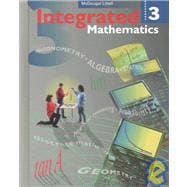| What Students Are Saying | xiv | ||||
| Course Preview | xvi | ||||
| Unit 1 Modeling Problem Situations | |||||
|
|||||
|
3 | (6) | |||
|
|||||
|
9 | (7) | |||
|
|||||
|
16 | (7) | |||
|
|||||
|
23 | (6) | |||
|
|||||
|
29 | (8) | |||
|
|||||
|
37 | (8) | |||
|
|||||
|
45 | (8) | |||
|
|||||
|
53 | (16) | |||
|
|||||
|
62 | (4) | |||
| Unit 2 Exploring and Applying Functions | |||||
|
66 | (3) | |||
|
69 | (8) | |||
|
|||||
|
77 | (8) | |||
|
|||||
|
85 | (9) | |||
|
|||||
|
94 | (7) | |||
|
|||||
|
101 | (9) | |||
|
|||||
|
110 | (9) | |||
|
|||||
|
119 | (7) | |||
|
|||||
|
126 | (13) | |||
|
|||||
|
133 | (3) | |||
| Unit 3 Logical Reasoning and Methods of Proof | |||||
|
136 | (3) | |||
|
139 | (8) | |||
|
|||||
|
147 | (6) | |||
|
|||||
|
153 | (6) | |||
|
|||||
|
159 | (6) | |||
|
|||||
|
165 | (7) | |||
|
|||||
|
172 | (7) | |||
|
|||||
|
179 | (8) | |||
|
|||||
|
187 | (5) | |||
|
|||||
|
192 | (15) | |||
|
|||||
|
200 | (4) | |||
| Unit 4 Sequences and Series | |||||
|
204 | (3) | |||
|
207 | (9) | |||
|
|||||
|
216 | (6) | |||
|
|||||
|
222 | (6) | |||
|
|||||
|
228 | (9) | |||
|
|||||
|
237 | (7) | |||
|
|||||
|
244 | (7) | |||
|
|||||
|
251 | (16) | |||
|
|||||
|
260 | (4) | |||
| Unit 5 Exponential and Logarithmic Functions | |||||
|
264 | (3) | |||
|
267 | (8) | |||
|
|||||
|
275 | (6) | |||
|
|||||
|
281 | (7) | |||
|
|||||
|
288 | (8) | |||
|
|||||
|
296 | (5) | |||
|
|||||
|
301 | (8) | |||
|
|||||
|
309 | (8) | |||
|
|||||
|
317 | (14) | |||
|
|||||
|
324 | (4) | |||
| Unit 6 Modeling and Analyzing Data | |||||
|
328 | (3) | |||
|
331 | (7) | |||
|
|||||
|
338 | (6) | |||
|
|||||
|
344 | (6) | |||
|
|||||
|
350 | (9) | |||
|
|||||
|
359 | (14) | |||
|
|||||
|
366 | (4) | |||
| Unit 7 Applying Probability Models | |||||
|
370 | (3) | |||
|
373 | (9) | |||
|
|||||
|
382 | (8) | |||
|
|||||
|
390 | (5) | |||
|
|||||
|
395 | (8) | |||
|
|||||
|
403 | (7) | |||
|
|||||
|
410 | (15) | |||
|
|||||
|
419 | (3) | |||
| Unit 8 Angles, Trigonometry, and Vectors | |||||
|
422 | (3) | |||
|
425 | (5) | |||
|
|||||
|
430 | (10) | |||
|
|||||
|
440 | (6) | |||
|
|||||
|
446 | (7) | |||
|
|||||
|
453 | (6) | |||
|
|||||
|
459 | (8) | |||
|
|||||
|
467 | (16) | |||
|
|||||
|
476 | (4) | |||
| Unit 9 Transformations of Graphs and Data | |||||
|
480 | (3) | |||
|
483 | (6) | |||
|
|||||
|
489 | (7) | |||
|
|||||
|
496 | (5) | |||
|
|||||
|
501 | (9) | |||
|
|||||
|
510 | (9) | |||
|
|||||
|
519 | (7) | |||
|
|||||
|
526 | (15) | |||
|
|||||
|
534 | (4) | |||
| Unit 10 Periodic Models | |||||
|
538 | (3) | |||
|
541 | (7) | |||
|
|||||
|
548 | (6) | |||
|
|||||
|
554 | (6) | |||
|
|||||
|
560 | (8) | |||
|
|||||
|
568 | (9) | |||
|
|||||
|
577 | (5) | |||
|
|||||
|
582 | (8) | |||
|
|||||
|
590 |









